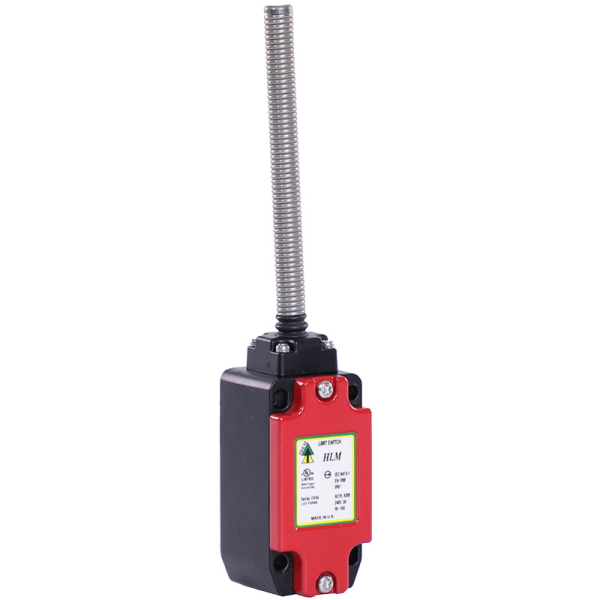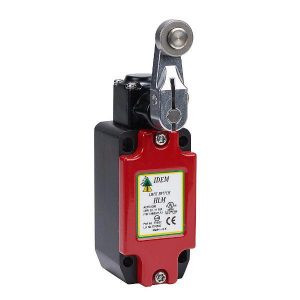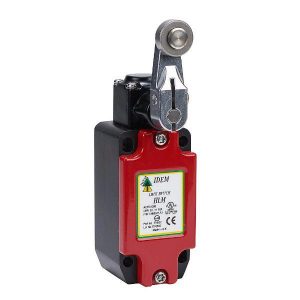Limit switches and alignment switches are essential components in industrial automation systems, used to detect object position, ensure safety compliance, and initiate machine responses. IDEM’s…
Limit switches and alignment switches are essential components in industrial automation systems, used to detect object position, ensure safety compliance, and initiate machine responses. IDEM’s solutions are engineered for reliability in harsh environments, offering precise control for safety doors, conveyors, and positioning tasks across a wide range of applications.
Why Choose IDEM Switches for Your Application?
IDEM’s switches are built to IEC 60947-5-1 standards, ensuring safety and durability. With options available in plastic, die-cast, and stainless steel housings, they provide flexibility for both cost-sensitive and hygienic environments. These switches offer positive opening contacts, high mechanical life ratings, and a wide range of actuator styles to suit different installation needs.
Types of IDEM Limit Switches Available
Plastic Body Limit Switches – LSPS Series
The LSPS series from IDEM provides compact, cost-effective safety limit switches with IP67 protection. Ideal for general industrial use, these switches feature multiple actuator types, snap or slow action contacts, and standard mounting footprints. Their polymer housing is resistant to impact and corrosion, making them suitable for light- to medium-duty environments.
Die-Cast Metal Limit Switches – LSMM Series
Designed for rugged environments, IDEM’s LSMM series offers die-cast zinc alloy bodies with a protective coating. These switches are rated IP67 and are ideal for heavy-duty applications like machinery interlocking and position sensing. The LSMM line supports interchangeable actuators and comes with both top and side entry cable options.
Stainless Steel Limit Switches – HLM-SS Series
The HLM-SS series is constructed from 316-grade stainless steel, providing unmatched resistance to cleaning agents and aggressive washdowns. Rated IP69K, these switches are perfect for food, beverage, and pharmaceutical industries where hygiene and ingress protection are critical. Available with various actuator heads and slow/snap action contacts.
IDEM Belt Alignment Switches for Conveyor Safety
IDEM Python Series – Heavy-Duty Belt Alignment
IDEM’s Python series belt alignment switches are designed for heavy-duty conveyor applications. They detect belt misalignment conditions and activate warning or shutdown circuits before damage occurs. Built with robust enclosures and available with long roller actuators, these switches offer reliable monitoring in mining, bulk handling, and logistics operations.
Common Conveyor Belt Safety Applications
IDEM alignment switches are commonly installed on conveyor systems where material spillage, belt damage, or tracking issues pose safety hazards. They serve as early detection devices that trigger alerts or cut-offs, ensuring operator safety and minimizing equipment downtime in industries such as quarrying, packaging, and automotive manufacturing.
Key Features and Technical Specifications
Actuator Options for Accurate Position Sensing
IDEM offers a variety of actuator types, including roller levers, spring rods, adjustable levers, and plunger styles. These provide versatile configuration for different detection angles, object types, and installation constraints, ensuring optimal response in diverse automation setups.
Environmental Protection and Safety Ratings
All IDEM limit and alignment switches meet IP67 or IP69K ratings, making them suitable for harsh or hygienic environments. Certified to IEC 60947-5-1 and available with EN50041 mounting, the switches comply with global safety standards and mechanical durability expectations.
Contact Configuration and Switching Action
Choose from slow action or snap action contacts based on your system’s response requirements. IDEM switches offer single or double pole options, normally open (NO) or normally closed (NC) contacts, and positive opening for guaranteed disconnection during faults or emergencies.
Applications in Industrial Automation
Position Sensing and Guard Door Interlock
IDEM limit switches are commonly used for detecting mechanical movement or door positions in machines and robotic systems. Guard door interlock switches ensure that access points remain safely locked during machine operation, helping prevent accidental injury and enabling Category 4 PLe-level safety systems.
Belt Alignment Monitoring for Conveyor Systems
Belt alignment switches monitor the lateral movement of conveyor belts and detect deviations. This prevents excessive wear and product loss, making them indispensable in material handling systems and bulk transport lines.
Industries That Rely on IDEM Limit Switches
These switches are widely adopted in sectors including food processing, beverage production, packaging, mining, logistics, and pharmaceuticals. Their IP-rated enclosures and diverse actuator options make them suitable for both hygienic and harsh outdoor environments.
Why IDEM? Trusted Safety Solutions Worldwide
High Mechanical Life and Rugged Design
IDEM switches are engineered to last, with some models offering mechanical life cycles exceeding 1 million operations. Their robust build ensures long-term reliability even in high-vibration or corrosive conditions.
Compliance with International Safety Standards
All IDEM limit and alignment switches meet international certifications such as SIL3, Category 4 PLe, and ISO 14119. This ensures integration into modern industrial safety systems without compromising regulatory compliance.
Broader Integration with Safety & Automation Systems
In modern industrial environments, limit or alignment switches are only one part of an integrated safety architecture. These systems will work in tandem with various critical components such as safety PLCs, safety contactors or safety light curtains (including muting light curtains) to ensure real-time hazard detection and safe machine shutdown. Common peripheral safety devices like the emergency stop button, two hand station, and emergency stop rope pull are all effectively managed by the safety PLC’s logic structure.
Advanced installations frequently incorporate safety relays, safety non-contact switches, RFID switches, and other mechanical interlock switches or solenoid locking switches—each adding specific protective functions to the machinery. To maintain continuous system health, engineers also deploy standstill monitors, speed monitors, soft starters, and reversing contactors within their automation frameworks. For measuring the product itself, solutions such as measurement light curtains can be integrated.
Beyond motion and logic safety, electrical condition monitoring is equally essential. Devices like insulation monitors, battery monitors, current monitors, voltage monitoring relays, phase sequence relays, undervoltage relays, and undercurrent monitoring relays are often integrated to detect anomalies in power flow or equipment performance, with this data displayable on HMI Touch Panels or similar systems. To support reliable operation, high-quality power relays and regulated power supplies are essential.













